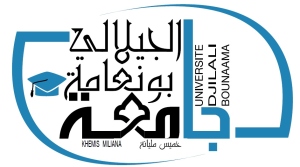GENERAL INTRODUCTION
Objective of the subject:
Introduce the student, in a first step, to all the sectors covered by the field of Science and Technology and in a second step a range of professions to which these sectors lead.
In the same context, this subject introduces the new challenges of sustainable development as well as the new professions that can result from them.
Recommended prior knowledge
Definitions:
1- M E T I E R
a) Occupation that allows you to earn your living.
Ø The profession of engineer.
Ø This actor has a job;
Ø A professional: A doctor, a carpenter, etc.
b) Each sector of activity of a company or industrial group.
c) Machine used for manufacturing fabrics
Ø Weaving loom.
Ø Embroidery loom: Frame on which certain works are stretched.
2- S C I E N C E
a) Knowledge that one has of a thing
Ø The science of good and evil;
Ø They say: This man is a well of science.
b) Sciences based on calculation and observation
Ø Mathematics – Physics – Chemistry – Etc…
Ø We also say exact sciences or family of hard sciences.
c) Humanities
Ø Who have man as their object.
d) Natural sciences
Ø Who study nature and its laws.
e) Pure sciences
Ø Including the object and fundamental knowledge as opposed to applied sciences.
HAVE INFUSED SCIENCE
It’s pretending to know everything without having studied
3- S A V O I R
Body of knowledge that we acquire through study, experience, observation, etc.
1. Know-how
Ø Competence, ability acquired in the exercise of a trade, a profession.
2. Branches of knowledge
Ø Together, system of knowledge on a given subject.
4- T E C H N I Q U
1. All applications of scientific knowledge to production needs and utility products.
2. Particular process used to successfully complete a concrete operation, to manufacture a material object or adapt it to its function.
3. Set of means and processes implemented in the practice of an activity.
Ø The technique of painting on silk;
Ø The technique of controlling road vehicles.
5- T E C H N O L O G I E
Study of industrial techniques considered as a whole or in a field of activity.
Economic sectors-Sectors of activity
A sector of economic activity is the grouping of manufacturing, industrial, commercial or service companies which have the same main activity.
There are three main economic sectors:
1. Primary
2. Secondary
3. Tertiary
A branch of activity brings together homogeneous production units.
The classification by sectors of economic activity should not be confused with professional classifications.
Primary sector
Ø Agriculture;
Ø Mining;
Ø Logging;
Ø Fishing.
Secondary sector
The secondary sector brings together activities linked to the transformation of raw materials from the primary sector.
Ø Industry (automobile, armaments, railway, naval, aeronautics, astronautics, space, mechanics, electronics, electrotechnics, energy, chemicals, pharmaceuticals, agri-food, wood, paper, textiles, energy production, household appliances, etc.).
Ø Building and public works;
Ø Housing;
Ø Crafts.
Tertiary sector
Ø Health;
Ø Education – training;
Ø Higher education, & scientific research;
Ø Justice;
Ø Culture;
Ø Commerce;
Ø Finance – insurance;
Ø Transport – logistics;
Ø Tourism;
Ø Safety – environment;
Ø Sports;
Ø Water – tick;
Ø Other services.

